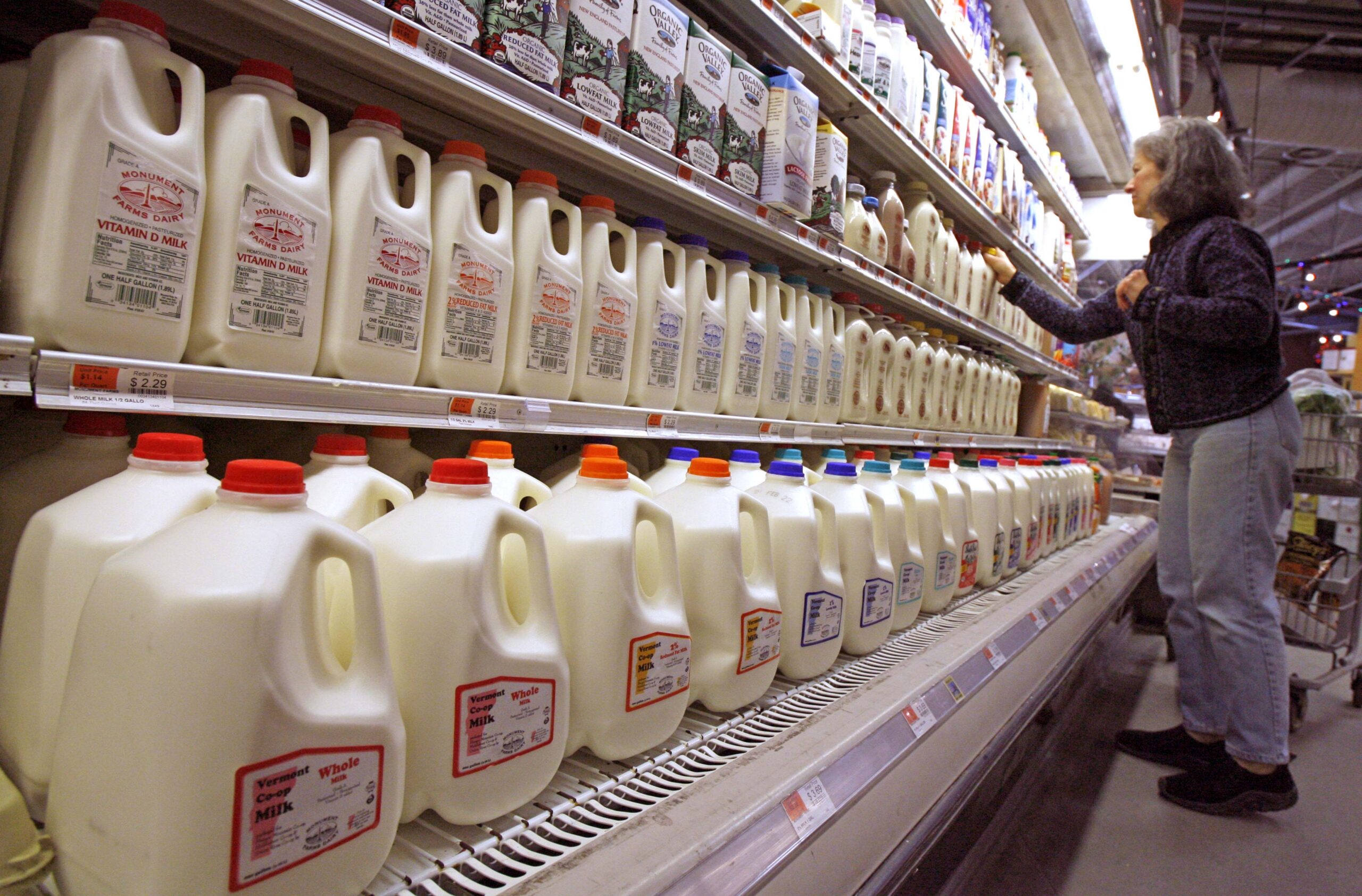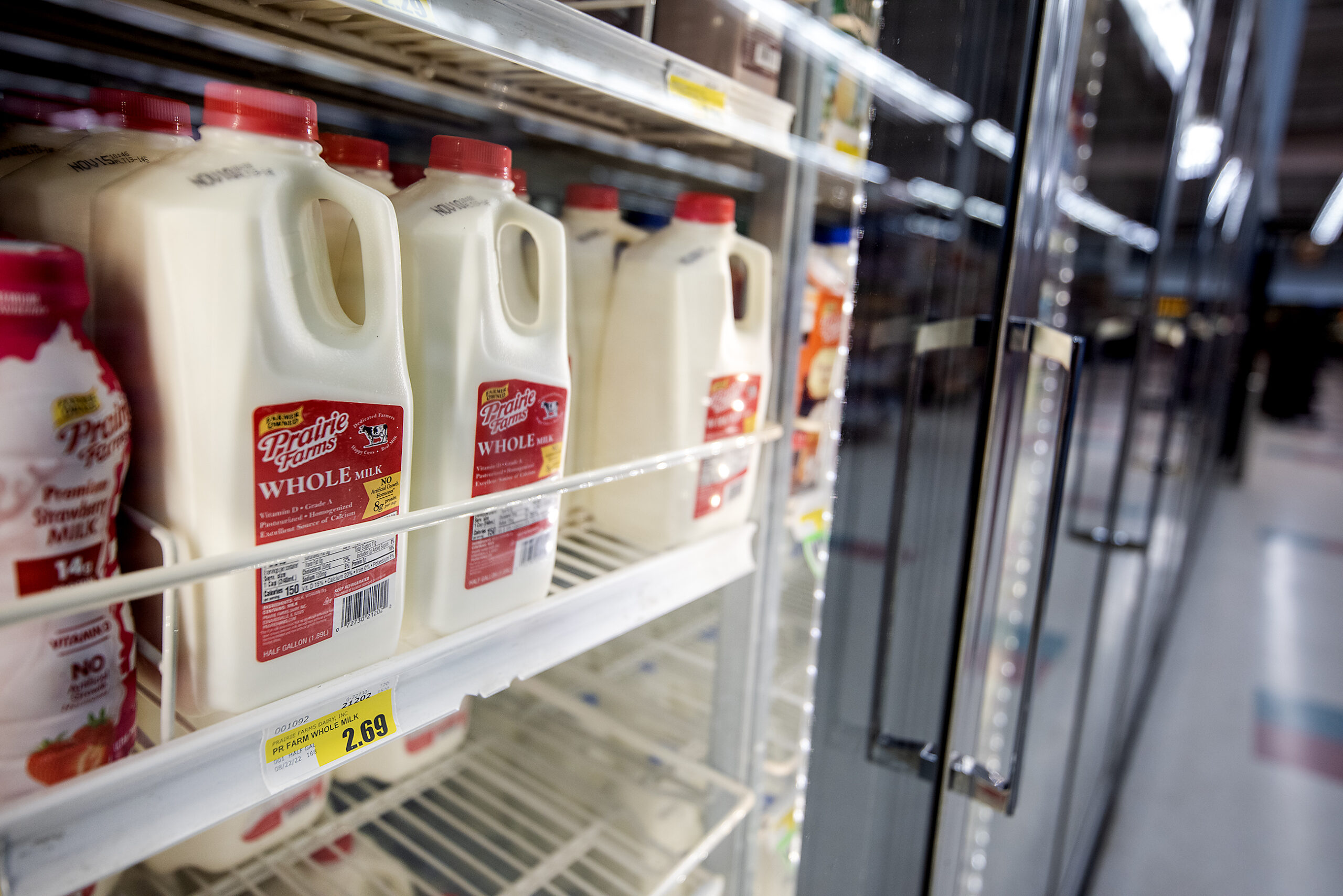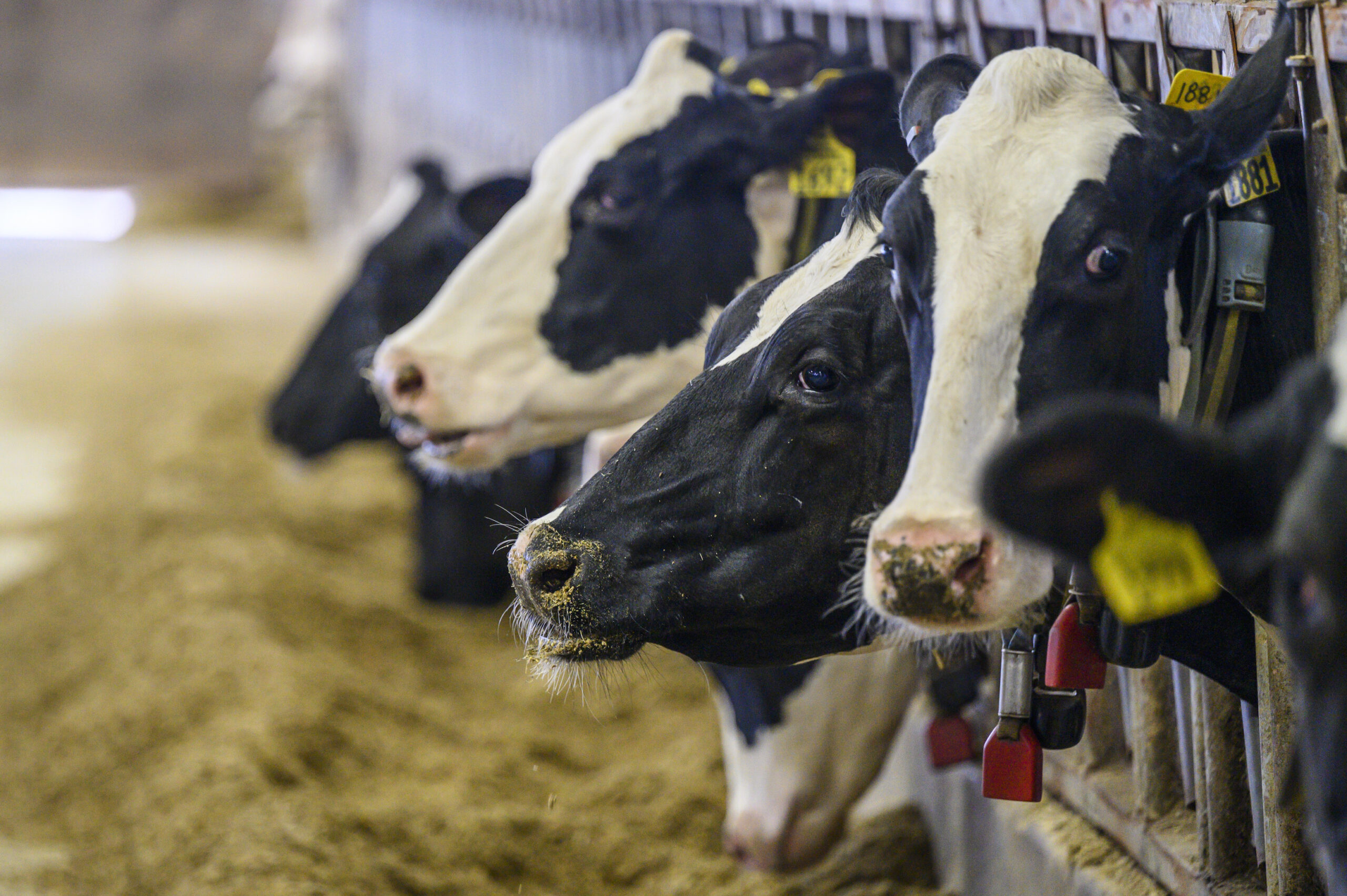Midwest dairy groups are calling out a national proposal for updating the federal milk pricing system after the COVID-19 pandemic wreaked havoc on farmers’ milk prices in 2020.
Last week, the National Milk Producers Federation called on the U.S. Department of Agriculture to hold an emergency hearing to adopt their plan for changing the pricing formula for beverage milk.
The national cooperative group said the current formula “contributed to disorderly marketing conditions last year during the height of the pandemic and cost dairy farmers over $725 million in lost income.”
News with a little more humanity
WPR’s “Wisconsin Today” newsletter keeps you connected to the state you love without feeling overwhelmed. No paywall. No agenda. No corporate filter.
But the Dairy Business Association and Edge Dairy Farmers Cooperative, both based in Green Bay, teamed up with Minnesota Milk Producers Association and the Nebraska State Dairy Association this week to release their own proposal for pricing under Federal Milk Marketing Orders, or FMMOs.
Amy Penterman, president of the Dairy Business Association, said the groups feel the National Milk Producers Federation’s plan, which would adjust the premium paid for beverage milk every two years instead of remaining static, is a limited fix.
“(The proposal) attempts to claw back lost revenue in the short term and leaves larger problems unsolved. Our organizations prefer sensible changes that will last for decades,” Penterman said.
The Midwest group’s proposal would directly tie the beverage milk price to cheese prices, which they say would reduce price volatility.
FMMOs regulate beverage milk sales by region and set national prices for farmers’ milk based on how it’s used. Beverage milk, called Class I, is typically the highest price and is calculated by taking the average of cheese prices (Class III) and milk powder prices (Class IV), then adding a 74-cent premium.
Even if they don’t produce beverage milk, many processors choose to participate in FMMOs in order to take advantage of pooling their milk for sales and a small premium paid to their farmers.
But Mark Stephenson, head of dairy policy analysis at the University of Wisconsin-Madison, said the Class I formula fell apart during the COVID-19 pandemic.
Because of the large gap between cheese prices and powder prices, beverage milk prices ended up being lower than cheese prices for much of the year. That meant farmers used to getting the highest market price for their milk were left feeling they missed out on revenue, while those who sell milk for processed products saw their plant withdraw milk from FMMOs because the price incentive was no longer there.
Stephenson said the issue comes down to transparency in how prices are set.
“When milk gets taken off of Federal Milk Marketing Order regulation, (farmers) don’t feel as though they can see and know that they received what they feel is the value of the milk,” Stephenson said. “Plants can pay them whatever it is that they need to get milk into the door of the plant, rather than what the federal government tells them they need to pay. It doesn’t mean they’re underpaying, but it does mean that it’s not as easy to see that.”
With conflicting proposals now before USDA, Stephenson said he doesn’t expect officials to call an emergency hearing on the issue until the industry has a unified voice in how they’d like to see the formula change.
Wisconsin Public Radio, © Copyright 2026, Board of Regents of the University of Wisconsin System and Wisconsin Educational Communications Board.






